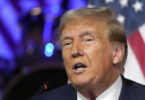Speaking at the “CEO Summit Asia 2020” Governor State Bank of Pakistan Reza Baqir expressed concern over falling exports and said that in terms of merchandise exports Pakistan is at par with small economies such as Afghanistan, Yemen Sudan and Ethiopia. However, he claimed that worst phase of stabalisation is over and economy is showing signs of turnaround as reflected in the uptick in segment sales and import of machinery and bearish trend of the stock market. Governor central bank also admitted that a credit of Rs. 500 billion has been provided to small and medium scale enterprises of manufacturing sector which is insufficient amount of bank lending in an emerging market economy.
Surge in the sale of cement and modest increase in the import of machinery for balancing and modernisation of exiting industries cannot be taken as barometer of starting process of turnaround of economy. Cement industry utilise locally available raw material which make it still competitive as compared with industries which consume imported raw material. Bulk of the foreign direct investment is in the shape of hot money landed in foreign currency deposits and not in the form of fixed productive investment. In a briefing to the Prime Minister, Finance Secretary listed few major risks to the economy which include steep fall in tax revenue, exchange rate volatility and less provincial cash surplus. These factors may worsen macroeconomic indicators. Notwithstanding intensified efforts, FBR will succeed in collecting revenue of Rs.4.5 trillion. If it makes extra efforts then a revenue of Ra4.8 billion can be raised, which will be Rs.450 billion less than the downwardly revised target. Major reason for missing target of tax revenue collection is the decline in the production of manufacturing sector.
The export industries consume imported raw materials and intermediate goods which have become very expensive with currency depreciation of over 40 percent. It explains 3.8percent fall in exports last months. Textiles are the major item of exports which used relatively cheaper raw material, chemicals and dyes imported from India. That source is no longer available after suspension of trade relations last year. It was expected that new industrial policy shall be announced with emphasis on setting up industries of imports substitution and raw material. But its announcement missed several targets.
High interest rate, expensive imported raw material, technological stagnation, lack of skilled manpower and unaffordable prices of energy inputs are big stumbling blocks in the way of improving economic environment. There is no indication that interest rate shall be lowered. Induction and indegenisation of latest technologies do not figure in the priority list although it cannot be ignored if government really wants to enter in the second phase of industrialisation with the relocation of Chinese industries in nine special economic zones. Neither previous government nor the incumbent one has announced short term strategies and long term planning for skill development.
Government has decided to not increase further the electricity and gas prices but it is hardly an incentive for investment as the prices of energy inputs in Pakistan are the highest in the region. Non-availability of industrial raw material at competitive price is affecting production of goods for both local consumption and exports. Efforts have not been made to explore new sources of raw material import and facilitation of raw materials producing industry in the country. It was the exchange rate stability, monetary policy of easy credit, lower tariffs of electricity and gas and progressive taxation regime that had put the economy on the path of revival in 2000 and then over 7 percent economic growth in succeeding years. The prevailing business environment does encompass these necessary ingredients of giving spurt to economic growth.






